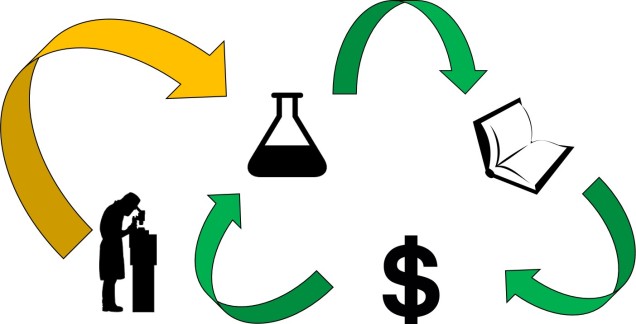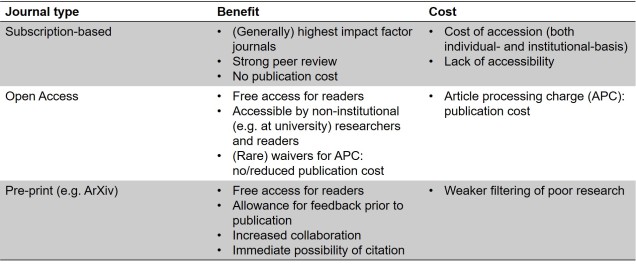The dreaded paywall
For anyone who absorbs their news and media through the Internet (hello, welcome to the 21st Century), you would undoubtedly be familiar with a few frustrating and disingenuous aspects of media such as clickbait headlines and targeted advertising. Another one that might aggravate the common reader is Ol’ Reliable, the paywall – blocking access to an article unless some volume of money is transferred to the publisher, usually through a subscription basis. You might argue that this is a necessary evil, or that rewarding well-written pieces and informative journalism through monetary means might lead to the free market starving poor media (extremely optimistically). Or you might argue that the paywall is morally corrupt and greedy, and just another way to extort money out of hapless readers.

Accessibility in science
I’m loathe to tell that you that even science, the powerhouse of objectivity with peer-review to increase accountability, is stifled by the weight of corporate greed. You may notice this from some big name journals, like Nature and Science – articles cost money to access, either at the individual level (e.g. per individual article, or as a subscription for a single person for a year) or for an entire institution (such as universities). To state that these paywalls are exorbitantly priced would be a tremendous understatement – for reference, an institution subscription to the single journal Nature (one of 2,512 journals listed under the conglomerate of Springer Nature) costs nearly $8,000 per year. A download of a single paper often costs around $30 for a curious reader.
Some myths about the publishing process
You might be under the impression, as above, that this money goes towards developing good science and providing a support network for sharing and distributing scientific research. I wish you were right. In his book ‘The Effective Scientist’, Professor Corey Bradshaw describes the academic publishing process as “knowledge slavery”, and no matter how long I spend thinking about this blog post would I ever come up with a more macabre yet apt description. And while I highly recommend his book for a number of reasons, his summary and interpretation of how publishing in science actually works (both the strengths and pitfalls) is highly informative and representative.
There are a number of different aspects about publishing in science that make it so toxic to researchers. For example, the entirety of the funds acquired from the publishing process goes to the publishing institution – none of it goes to the scientists that performed and wrote the work, none to the scientists who reviewed and critiqued the paper prior to publication, and none to the institutions who provided the resources to develop the science. In fact, the perception is that if you publish science in a journal, especially high-ranking ones, it should be an honour just to have your paper in that journal. You got into Nature – what more do you want?

Open Access journals
Thankfully, some journals exist which publish science without the paywall: we refer to these as ‘Open Access’ (OA) journals. Although the increased accessibility is undoubtedly a benefit for the spread of scientific knowledge, the reduced revenue often means that a successful submission comes with an associated cost. This cost is usually presented as an ‘article processing charge’: for a paper in a semi-decent journal, this can be upwards of thousands of dollars for a single paper. Submitting to an OA journal can be a bit of a delicate balance: the increased exposure, transparency and freedom to disseminate research is a definite positive for scientists, but the exorbitant costs that can be associated with OA journals can preclude less productive or financially robust labs from publishing in them (regardless of the quality of science produced).

Manuscripts and ArXives
There is somewhat of a counter culture to the rigorous tyranny of scientific journals: some sites exist where scientists can freely upload their manuscripts and articles without a paywall or submission cost. Naturally, the publishing industry reviles this and many of these are not strictly legal (since you effectively hand over almost all publishing rights to the journal at submission). The most notable of these is Sci-Hub, which uses various techniques (including shifting through different domain names in different countries) to bypass paywalls.
Other more user-generated options exist, such as the different subcategories of ArXiv, where users can upload their own manuscripts free of charge and without a paywall and predominantly prior to the peer-review process. By being publically uploaded, ArXiv sites allow scientists to broaden the peer-review process beyond a few journal-selected reviewers. There is still some screening process when submitting to ArXiv to filter out non-scientific articles, but the overall method is much more transparent and scientist-friendly than a typical publishing corporation. For articles that have already been published, other sites such as Researchgate often act as conduits for sharing research (either those obscured by paywalls, despite copyright issues, or those freely accessible by open access).
You might also have heard through the grapevine that “scientists are allowed to send you PDFs of their research if you email them.” This is a bit of a dubious copyright loophole: often, this is not strictly within the acceptable domain of publishing rights as the journal that has published this research maintains all copyrights to the work (clever). Out of protest, many scientists may send their research to interested parties, often with the caveat of not sharing it anywhere else or in manuscript form (as opposed to the finalised published article). Regardless, scientists are more than eager to share their research however they can.

Civil rights and access to science
There are a number of both empirical and philosophical reasons why free access to science is critically important for all people. At least one of these (among many others) is based on your civil rights. Scientific research is incredibly expensive, and is often funded through a number of grants from various sources, among the most significant of which includes government-funded programs such as the Australian Research Council (ARC).
Where does this money come from? Well, indirectly, you (if you pay your taxes, anyway). While this connection can be at times frustrating for scientists – particularly if there is difficulty in communicating the importance of your research due to a lack of or not-readily-transparent commercial, technological or medical impact of the work – the logic applies to access to scientific data and results, too. As someone who has contributed monetarily to the formation and presentation of scientific work, it is your capitalist right to have access to the results of that work. Although privatisation ultimately overpowers this in the publishing world, there is (in my opinion) a strong moral philosophy behind demanding access to the results of the research you have helped to fund.
Walled off from research
Anyone who has attempted to publish in the scientific literature is undoubtedly keenly aware of the overt corruption and inadequacy of the system. Private businesses hold a monopoly on the dissemination of scientific research, and although science tries to overcome this process, it is a pervasive structure. However, some changes are in process which are seeking to re-invent the way we handle the publishing of scientific research and with strong support from the general public there is opportunity to minimise the damage that private publication businesses proliferate.
